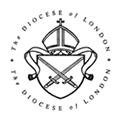Religious Censuses
The 1851 Religious Census was a unique survey of all identified places of religious worship then in existence, including Nonconformist and Catholic chapels and Jewish synagogues as well as Church of England churches. The surviving returns from individual churches and the published compilations of figures given an invaluable snapshot of religious practice in the middle of the nineteenth century.
Returns were distributed and collected by the enumerators for the normal population census, which was being conducted at the same time. The Church of England returns were normally completed by the incumbent or a curate, but occasionally by churchwardens or census officials. Information was requested on attendances (both adults and Sunday School children) at all services on the Census Sunday, 30 March 1851, and also on average attendances if significantly different. In addition the forms asked for the date of consecration of churches built since 1800, and figures for the costs of construction, endowments and seating capacity. There was also a space where respondents could add remarks. Specific forms vary greatly in usefulness, with some respondents taking great care to supply full and accurate information and sometimes adding copious remarks, while others left much of the form blank and/or supplied attendance figures that are obviously rough - and perhaps optimistic - estimates rather than exact counts. Nevertheless, if you are interested in the history of a church or parish that already existed in 1851 it is well worth looking up the evidence provided by the Religious Census, including returns for near neighbours, both Anglican and non-Anglican, that will give you an idea of the wider religious climate of the locality. Even if ‘your’ church did not exist in 1851, the Census may still give you a interesting idea of its religious ‘pre-history’.
A compilation of the statistics for London contained in the original printed report of the Religious Census is available here as a pdf (with permission from ProQuest’s Parliamentary Papers online). It includes summary tables for London (including districts south of the Thames) and the registration county of Middlesex, which corresponds closely but not exactly to the extent of the present-day Diocese of London. There are separate tables for the cities of London and Westminster and the borough of Tower Hamlets, and for the 36 registration districts (11 of them south of the Thames) that then made up the built-up areas of London, and the 6 registration districts that covered rural (now surburban) Middlesex (Source: House of Commons Parliamentary Papers, 1852-3 [1690] Census of Great Britain, 1851. Religious Worship. England and Wales. Report and Tables, online edition Copyright ProQuest Information and Learning Company). These printed tables provide an initial accessible resource for getting a sense of the religious make-up of a neighbourhood.
In order to consult the original returns you will probably need to go to the National Archives (www.nationalarchives.gov.uk) at Kew, although it would be worth checking whether your local borough archive or local history library holds a copy of returns relevant to your area. It is, however, straightforward to view the returns at Kew. They available on microfilm in the open access reading room, for which it is not necessary to obtain a readers ticket or make an appointment. The class reference is HO 129, and the returns are organized within it by sequential number of registration districts (1-25 for urban north, east and central London; 132-137 for suburban Middlesex). Few London registration districts contain more than thirty or forty returns, so it is usually a fairly quick matter for find the particular one(s) you are looking for, but it is useful to be aware, especially if you are not initially sure in which registration district to look, that particular parishes are organized in accordance with the sequence of parishes shown in the population tables for the main census: House of Commons Parliamentary Papers, 1852-3 [1631] Census of Great Britain, 1851. Population tables, 1. Numbers of the inhabitants …, online edition Copyright ProQuest Information and Learning Company. A pdf of the pages relevant to London is also available here (with permission from ProQuest’s Parliamentary Papers online).
Later Religious Censuses
The 1851 Religious Census was never repeated as an official government exercise, but two unofficial censuses conducted by newspapers at later dates make it possible to get an indication of trends over the second half of the nineteenth century, and to gather information on churches that did not exist in 1851. No returns relating to individual churches survive, but attendance figures for every place of worship covered are listed in the printed reports. The results of the census conducted by the British Weekly in 1886 were published as The Religious Census of London (London: Hodder and Stoughton, 1888), available online at www.openlibrary.org/b/OL14037667M. The census conducted in 1902-3 by the Daily News was particularly thorough and informative and was published as Richard Mudie-Smith, The Religious Life of London (London: Hodder and Stoughton, 1904), with extensive commentaries and analysis. It is available online at www.archive.org/details/religiouslifeofl00mudi.





